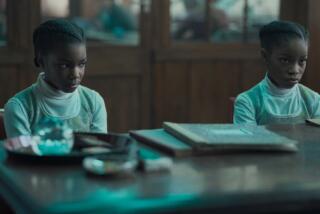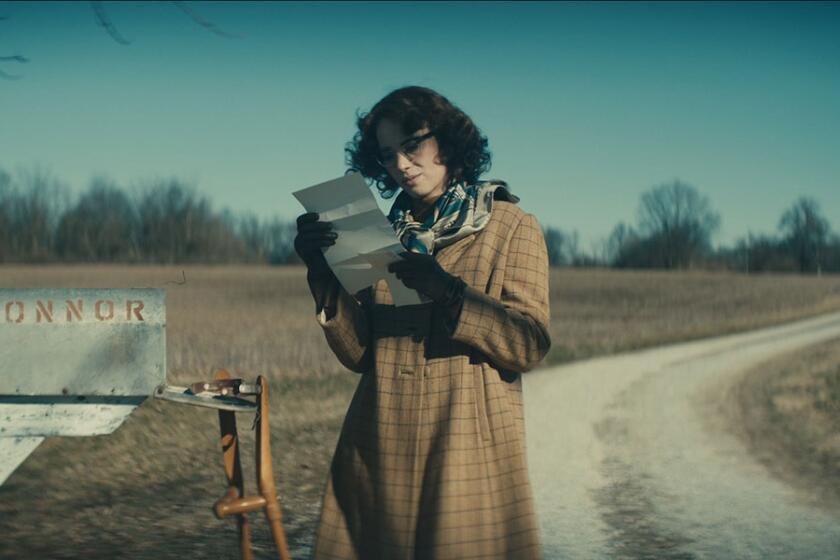Her geisha film is more manga, less ‘Memoirs’
PERHAPS the Japanese just finally decided they could not allow one more Hollywood take on geisha life to go unanswered. Whether it was a reaction to the casting of Chinese actresses as Japanese geishas or the Westernized romance of its story line, American director Rob Marshall’s big-budget “Memoirs of a Geisha” was a memorable disappointment in Japan.
A Japanese riposte comes with “Sakuran,” the first film from Mika Ninagawa, who is already well known here for her photography. Centered on the lives of the oiran, elite prostitutes working in official red light districts of the Edo era, “Sakuran” has been a surprise hit with Japan’s style-conscious young women. Ninagawa took her story from a 1990s manga and, on a budget of just $2.5 million, turned it into a mash-up of flamboyant colors, exuberant music and over-the-top fashion.
She also banished sentimentality. Marshall’s geishas may have seemed catty enough to host “The View,” but they dreamed for a good man to take them away. “Sakuran” revolves around the trials of Kiyoha, a caged prostitute played with rock-star attitude by real-life Japanese rocker Anna Tsuchiya, whose mastery of her profession makes her the reigning oiran superstar. But Ninagawa’s prostitutes want only to escape. And they don’t see any rescuing angels among the violent and morally weak men around them.
Ninagawa recently discussed why “Sakuran” has struck such a chord with Japanese audiences.
Why do you think young women have responded so well to “Sakuran”?
I’ve always been frustrated by geisha and oiran movies. Women are not as weak as shown. The characters should be much bolder. And I wanted to show that it’s quite fun for women to live [in a] girls-only world. Women show their true feelings when left alone. I know because I attended a girls’ school.
Are young Japanese women today more feisty and independent than their mothers?
The media says so, but I don’t agree. Of course women have become stronger in some ways. But our mother’s generation had to fight. Now girls don’t have to. Perhaps they don’t notice that they are trapped.
I wanted the movie to push them forward, to say: “Stand on your own feet and walk.” I hope Kiyoha will be a hero for girls.
Why do you think “Sakuran” has succeeded where “Memoirs of a Geisha” is believed to have misfired?
[“Memoirs”] was a very orthodox story: Patience, patience, patience and good things will happen in the end. It’s a bit like a Disney movie. It lacked reality. Usually women [viewers] will project their feelings onto one of the roles -- “If I were Kiyoha, if I were Sayuri [the lead character in ‘Memoirs’].”
But Sayuri’s character was too old-fashioned. She was too patient. She wept just because someone untied the belt on her kimono. Americans have a fantasy that Japanese women should behave patiently and quietly.
But everybody told me I should see [“Memoirs”] because I was making “Sakuran.”
To see it as an example of something to follow, or something to avoid?
To avoid [laughs]. But it must be really hard for a foreigner to make a Japanese movie. The average Japanese person tends to notice when a kimono is not worn properly. Or when they pull the [small] bell at a shrine and we hear the sound of a big bell. It doesn’t matter to the story itself, but we think: “That’s not the way.”
You say you wanted to avoid sentimentality. But Kiyoha escapes. Isn’t that a happy ending?
The Japanese like their heroes to die. In a way it was a happy ending because she was able to get out of the house and see the real cherry blossoms. But I would imagine she was probably caught and brought back right afterward.
More to Read
Only good movies
Get the Indie Focus newsletter, Mark Olsen's weekly guide to the world of cinema.
You may occasionally receive promotional content from the Los Angeles Times.






